Out of all the educational technology tools that exist, learning management systems hold a very special place. And no wonder — it’s the best place to manage, create, and implement learning content.
There are dozens of different LMSs out there that serve varying purposes and address different needs. It’s hardly an easy task to choose one that will fit your business. And should you even bother with them? Let’s try to figure it out.
The importance of LMS
Managing training and education efficiently is no small task, and that’s where LMS platforms come in. These platforms help businesses, schools, and organisations to manage, deliver, and track learning in one place.
Instead of juggling scattered materials or relying on outdated methods, an LMS makes it easier to create courses, monitor progress, and ensure learners stay engaged. Tasks, such as onboarding new employees, training teams, or running online classes, become easy with LMS, thanks to structured and accessible information.
In short, it’s a tool that saves time, improves learning experiences, and keeps all of the educational content in one central hub.
This is why learning management systems are on the rise. According to statistics, the global corporate LMS market was estimated at $12,020 million USD in 2024 and is expected to rise to $72,300 million USD by 2034.
A learning management system offers companies an efficient way to train and develop employees, avoiding the hurdles traditional methods have. These platforms help streamline training, reduce time spent on administrative tasks, and improve learning accessibility.
Since businesses are constantly looking for better ways to manage and employee development, the LMS demand will continue to grow.
See also: What are the functions of a learning management system?
Learning management system examples and types
Not all learning management systems (LMS) are built the same. Depending on the needs of an organization, the right LMS can vary in terms of hosting, customization, and scalability.
Some are cloud-based for easy access, while others are self-hosted for greater control. Open-source options allow for customization, and enterprise solutions cater to large organizations with complex requirements.
Knowing the differences between these types can help you choose the best fit for your learning and training goals.
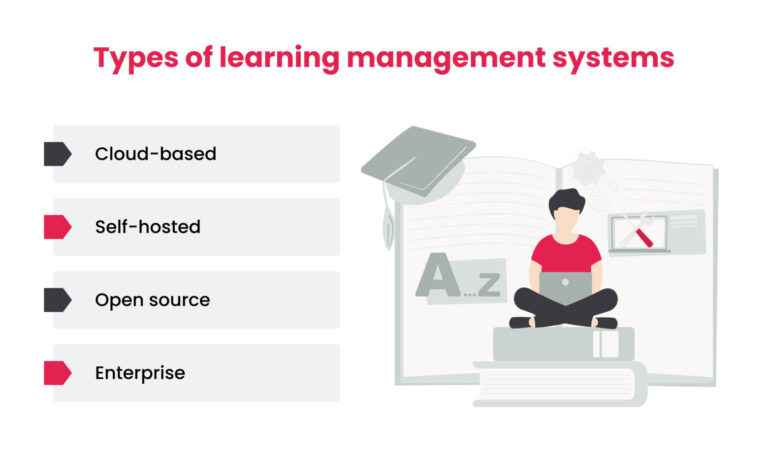
Cloud-based LMS
A cloud-based LMS is hosted online by a third-party provider, meaning you don’t need to worry about installation, updates, or server maintenance. These platforms are usually subscription-based and accessible from anywhere with an internet connection.
Choosing a cloud-based LMS is a perfect call for businesses or educational institutions that want a simple, ready-to-use solution without technical hassle.
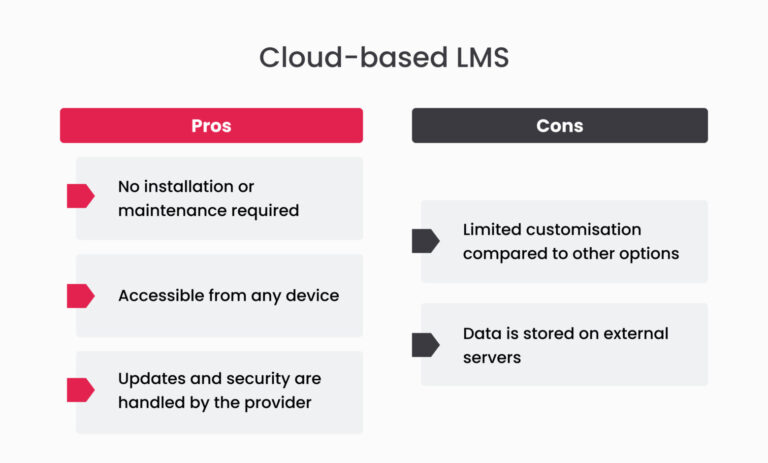
One of the most popular learning management system examples comes from Litmos. It’s known for its user-friendly design, custom branding options, and seamless mobile compatibility.
With a wide range of learning materials accessible anytime from any device, it helps employees develop new skills without location or schedule overlaps.Self-hosted LMS
This learning management system is installed on-premise. This means that you have full control over the system and can customise it to fit your needs. However, security and maintenance also fall on your shoulders.
A self-hosted LMS requires you to have an IT department for maintenance, but it also provides more freedom in data management and scaling.
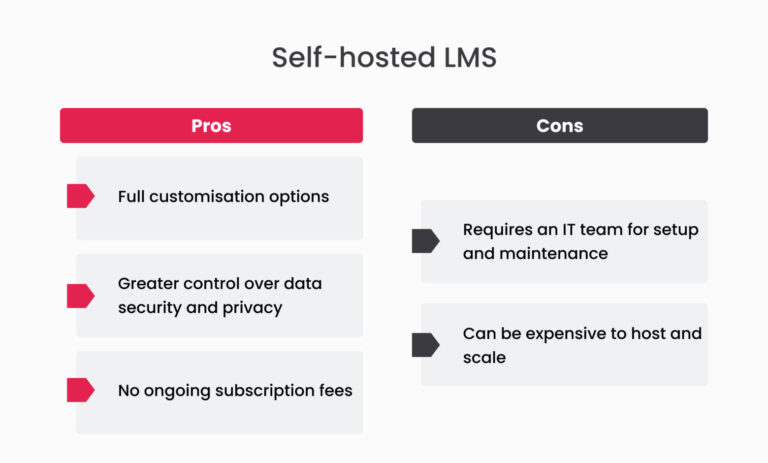
The most popular self-hosted LMS is Moodle.
Moodle is a flexible platform that supports various learning styles, from fully online courses to blended and self-paced learning. One of its strong sides comes from phone accessibility.
This way, students can access learning materials any time they want, and the push notifications will help them remember to study.
Open source LMS
Open-source LMS platforms are free to use and modify, making them a great choice for those who want full customisation without licensing fees. However, they require technical expertise to set up, configure, and maintain.
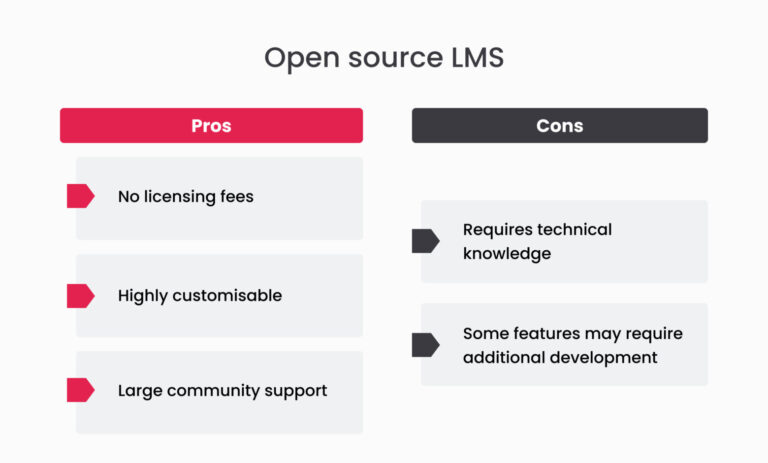
A good example of an open-source learning management system comes from Open edX. It adapts to any learning environment and offers advanced dashboards for both students and teachers. The platform can integrate with third-party tools and be customised to fit specific needs.
Enterprise LMS
Enterprise LMS platforms are designed for large organisations with complex training needs. They often include advanced features such as automation, integrations with HR software, compliance tracking, and detailed reporting.
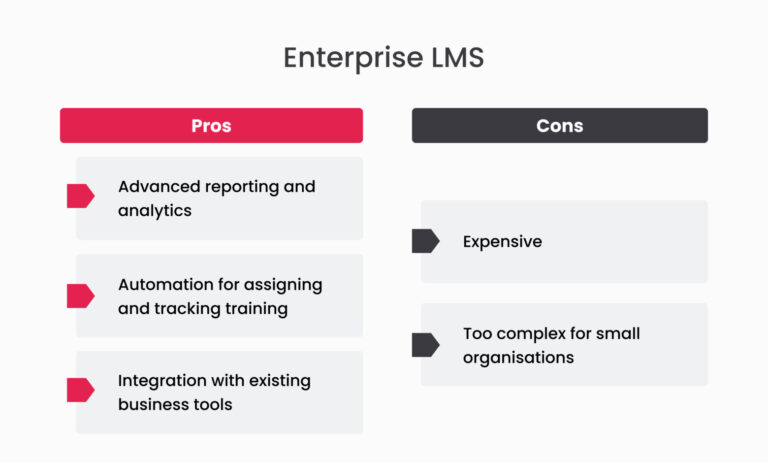
TalentLMS is a great example of an enterprise learning management system. It is highly customisable to fit your technical needs and is a perfect option for large organisations. The platform includes tools for tracking student’s progress, managing courses, and adding gamification elements.
It supports multiple languages and various eLearning file formats and can be integrated with business communication tools. See also: How to choose a learning management system?To sum up
The right LMS depends on your needs—whether it’s a flexible open-source platform like Moodle, an education-focused system like Canvas, or a corporate-friendly solution like SAP Litmos.
By understanding these examples, you can make a more informed choice about which system fits your goals.
How Altamira can help
If you are looking to build a learning management system for your business, prototype your idea, or improve your products and services, get a stress-free development with our approach.
- We are a zero-headaches software partner, and we are here to understand and address your needs.
- We focus on delivering tangible value in days, not weeks. Before the contract begins, you will already visualise and test your concept.
- Our streamlined development process ensures you get the most value from your investment.
- We build trust through transparent communication and continuous improvement in our processes and practices.
Contact us to discuss your needs and find the best fit for your organization.
FAQ
A learning management system (LMS) is a platform used to create, manage, and deliver educational content.
For example, an LMS can be used by businesses to train employees, by schools to provide online courses, or by organizations to offer professional development programs.
These systems typically include features like course creation, progress tracking, and assessments.
To explore your options with LMSs that fit your needs, get in touch.
The most common LMS platforms vary depending on the industry and use case. In education, widely used LMS platforms support online courses, grading, and student collaboration.
In corporate settings, popular LMS options focus on employee training, compliance, and professional development. The most commonly used LMSs typically offer scalability, ease of use, and integration with other tools.
LMS platforms generally fall into these four categories:
- Cloud-Based LMS – Hosted online, accessible from anywhere;
- Self-Hosted LMS – Installed on your own servers, giving you more control;
- Enterprise LMS – Designed for large organisations with complex training needs;
- Open source LMS – Focused on schools and universities.
Get in touch to find out which type of LMS will fit you best.
The easiest LMS to use depends on the user’s needs and technical experience. A user-friendly LMS typically has an intuitive interface, simple course creation tools, and minimal setup requirements.
For educators, an easy-to-use LMS may include drag-and-drop content management and automated grading. In corporate training, an LMS with straightforward onboarding, mobile compatibility, and seamless integration with existing systems is often preferred.






